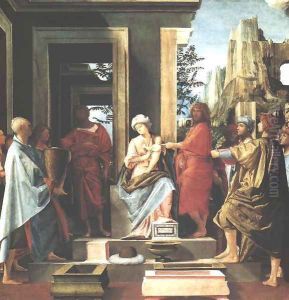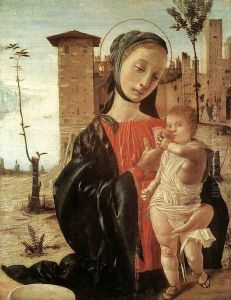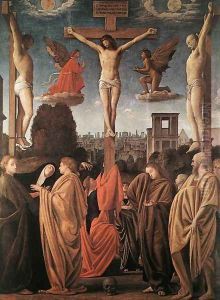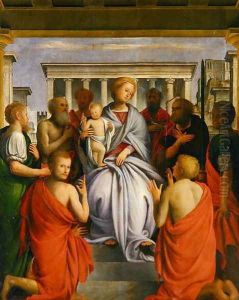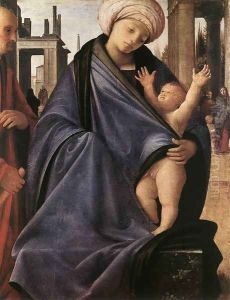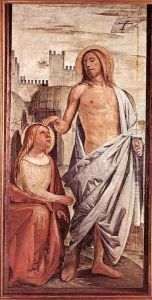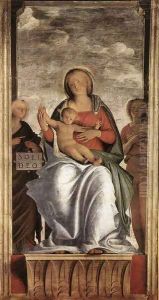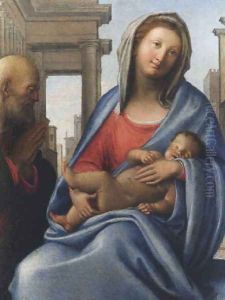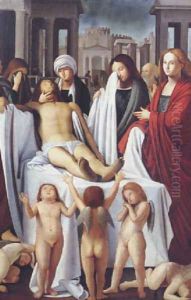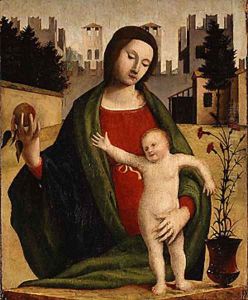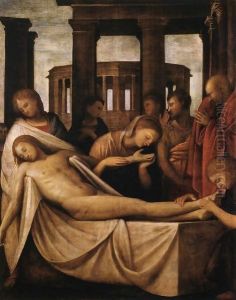(Bartolomeo Suardi) Bramantino Paintings
Bartolomeo Suardi, better known as Bramantino, was an Italian painter and architect who lived during the High Renaissance. Born around 1456, possibly in Milan, he was deeply influenced by the works of Donato Bramante, from whom he is believed to have derived his nickname, Bramantino, meaning 'little Bramante'. Bramantino's work is noted for its architectural elements and a unique blend of Lombard and Venetian influences, showcasing a distinctive approach to perspective and space.
Bramantino's early works are characterized by a strong use of perspective and a keen interest in architecture, likely reflecting the influence of Bramante. His painting style evolved over the years, with his later works displaying a more mature grasp of space and form, as well as a softer approach to color. He was not just a painter; his talents extended to architecture and decorative arts, making him a versatile artist of his time.
Among his notable works are the frescoes in the Santa Maria presso San Satiro church in Milan, which demonstrate his masterful use of perspective and his ability to integrate architectural elements with narrative painting. Bramantino also worked on the Sforza Castle in Milan, contributing to its decorations and architectural designs.
Despite his contributions to the Italian Renaissance, Bramantino has not received the same level of recognition as some of his contemporaries. This is partly due to the scarcity of his surviving works and the somewhat shadowy details of his life. Nevertheless, his work has been appreciated for its originality and his innovative approach to combining painting with architectural concepts.
Bramantino's later years saw him continuing to work in Milan, where he remained until his death around 1530. His legacy is that of an artist who bridged the worlds of painting and architecture, bringing a unique vision to the Italian Renaissance that has continued to fascinate art historians and enthusiasts alike.
